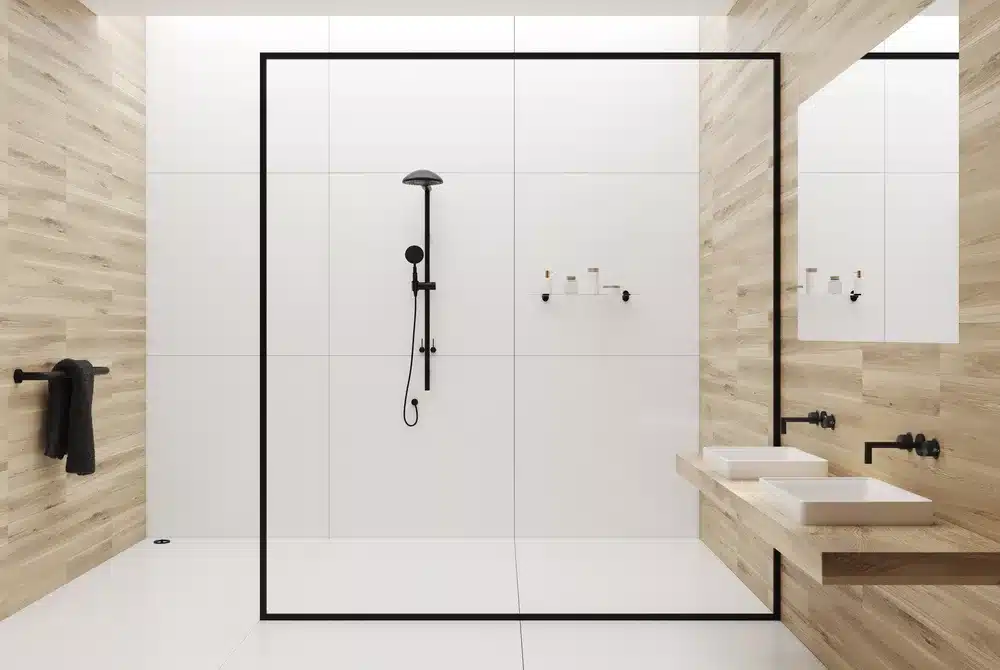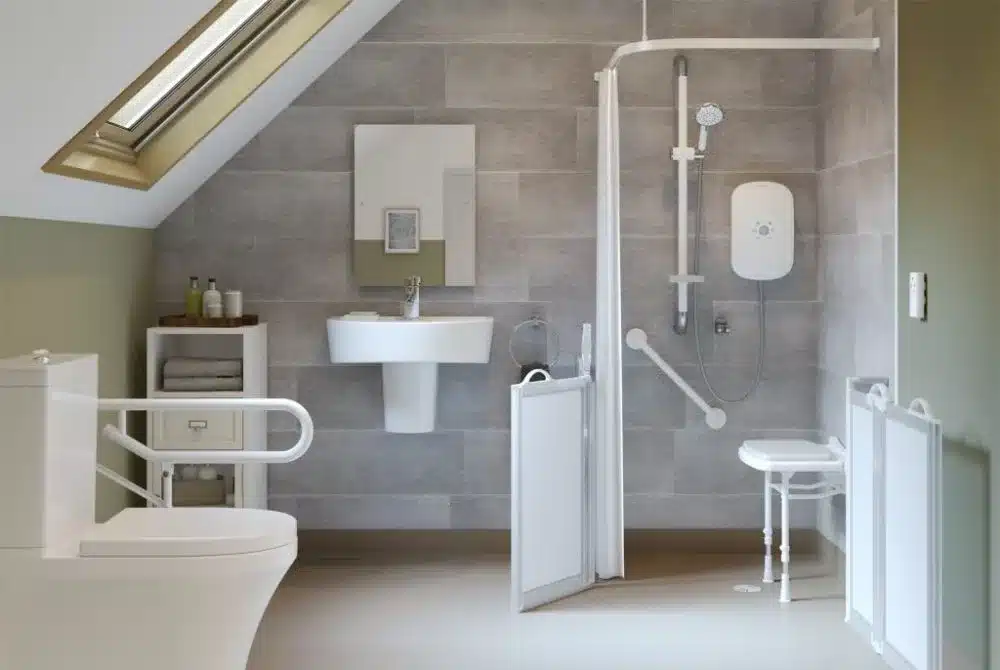Should You Install a Disabled Wet Room? Pros and Cons Explained.
If you or a loved one struggles with mobility, transforming a standard bathroom into a disabled wet room can be life-changing. Whether you’re looking for a safer alternative to traditional baths or searching for disabled showers that are easier to access, a wet room could be the ideal solution.
What You’ll Learn in this Article
✔️ What a disabled wet room is and how it differs
✔️ The key benefits of disabled wet rooms
✔️ Potential drawbacks and how to manage them
✔️ How wet rooms affect your hone’s value and energy usage
✔️ Whether a wet room is the right choice for your household
What Is a Disabled Wet Room?
A disabled wet room is a fully waterproofed bathroom with a level-access shower area. These rooms are specifically designed for older adults, wheelchair users, or anyone with limited mobility. Unlike standard bathrooms, disabled wet rooms eliminate steps, trays, and high-sided baths — creating a safer, more accessible environment.
The Pros of Installing a Disabled Wet Room
1. Improved Accessibility
One of the main benefits of a disabled wetroom is the level-access design, which eliminates hazards like steps and raised shower trays. This makes it significantly easier for:
Wheelchair users
People using walking frames or crutches
Individuals with poor balance, arthritis, or joint conditions
The open-plan layout also increases manoeuvrability, making it easier to safely reach the toilet, sink, or shower without barriers.
🧑🦽 According to NHS guidelines, accessible wet rooms are key in promoting independence and reducing fall risk for elderly and disabled individuals. Level-access showers are a core recommendation in home adaptations for mobility needs.
2. Flexible Design and Layout
Removing a traditional bath or shower enclosure gives you more flexibility in the layout of your bathroom. A disabled wet room can be fully tailored to meet your physical needs and preferences. Popular adaptations include:
Wall-mounted disabled showers
Fold-down shower seats
Grab rails
Height-adjustable or lowered sinks
Lever or mixer taps
Accessible toilets
Anti-slip flooring
Luxury additions like underfloor heating, digital shower controls, and modern finishes allow you to combine safety with style.
✨ The Centre for Ageing Better highlights that well-designed accessible bathrooms reduce fall risk, support ageing in place, and improve overall quality of life — especially when tailored to the user’s individual condition.
3. Increased Property Value
A well-installed wet room for disabled access can also add value to your home. Properties with accessibility features are in growing demand, especially among ageing homeowners or families with disabled members.
💷 Property expert Paul Gibbens notes in the Express that a wet room can increase a home’s value by £2,000–£5,000, especially when well integrated with the rest of the home’s design.
In addition to making the home easier to sell, a disabled wet room supports independent living — potentially delaying or reducing the need for residential care.
4. Easy to Clean and Maintain
Disabled wet rooms are much easier to clean compared to traditional bathrooms. With no shower tray, glass screens, or tightly spaced units, there are fewer hard-to-reach corners. The open layout allows carers or family members to help with bathing or cleaning as needed.
🧼 According to Age UK, removing physical barriers and simplifying bathroom layouts can significantly reduce cleaning effort for elderly individuals, especially those with chronic pain, fatigue, or limited strength.
This helps maintain better hygiene and encourages continued independence for longer.
5. Lower Water and Energy Bills
Showers use significantly less hot water than baths, helping reduce both energy and water bills — an important consideration for those on fixed incomes. A typical 10-minute shower uses around two-thirds less hot water than a full bath, leading to meaningful long-term savings.
💡 According to Worcester Bosch, a standard bath uses around 90 litres of water, a thermostatic mixer shower uses approximately 9 litres per minute — meaning a 10-minute shower would consume just 60–90 litres in total, depending on flow rate.
Source: The Guardian – “Is a bath more expensive than a shower?”
.
Age Care Bathrooms has been creating and installing mobility wet rooms for over 30 years. Call our team of bathroom experts or fill out our online form, and we’ll assist you in selecting the ideal wet room for your requirements.


The Cons of Disabled Wet Rooms
While the benefits are significant, there are a few drawbacks to consider:
1. Higher Installation Costs
Compared to a standard bathroom, a disabled wetroom requires more specialist work. Full waterproofing, level flooring, and proper drainage systems add to the overall cost. However, this investment often pays off in improved safety and comfort.
2. Longer Installation Time
Installing a wet room takes more time than a standard shower or bath replacement. Proper drying time for waterproofing layers is essential to prevent leaks and mould.
3. Ventilation and Damp Risks
Because the entire space is exposed to water, disabled wet rooms need excellent ventilation. Without a high-quality extractor fan, dampness and mould can develop — especially in smaller bathrooms.
4. Drainage Issues (If Poorly Installed)
Improper installation can lead to drainage problems or pooling water. That’s why it’s crucial to use a trusted installer with experience designing and fitting wet rooms for disabled and elderly users.
Is a Disabled Wet Room Right for You?
A disabled wet room can transform daily life for anyone with mobility challenges. From safer disabled showers to easier movement with a wheelchair or walking aid, it’s a practical, long-term investment in comfort and independence.
At Age Care Bathrooms, we’ve been designing and installing disabled wetrooms for over 30 years. Our team works with you to create a safe, stylish, and fully customised solution that suits your needs.
Ready to Explore Your Options?
Speak to our bathroom safety experts today to arrange your FREE in-home assessment and design
📞 Call us or 💬 Fill out our online form to get started.
Enquire Now
Fill In The Form Below And One Of The Team Will Reply As Soon As Possible!
